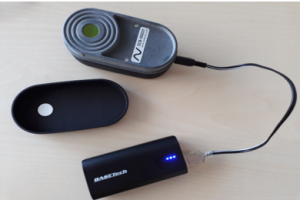
Food industry
Monitoring solutions for improved quality control in chocolate production
For the food industry, the MULTIPLE project aims to implement the technologies to improve the quality control within the manufacturing process and measure things like the viscosity, sugar content, grain size of the sugar and other quality product characteristics such as glossiness and texture.
MULTIPLE is implementing its technologies to improve the quality control in a chocolate production line. The whole process optimization system will be run with different labels of chocolate and measure things like the sugar content, grain size of the sugar and other quality product characteristics such as glossiness and texture. Chemometrics models will be used for the prediction of chocolate fat content, adulteration, composition, viscosity and crystallinity. The most suitable approach, or combination, will be selected for implementation and embedded in the software, so product quality can be checked and validated. With this data, deep classification models will be retrained and validated using cloud services. This technology aims to develop a control strategy capable to revise the destination (i.e. the final chocolate label) of the current subproducts even in intermediate close-to-final stages, depending on the compliance with quality requirements and characteristics of different chocolate types and labels.
First results
October 2020 – First trials with chocolate samples
Partners Imec, IRIS and Senorics performed measurements on chocolate samples from Jotis in the VNIR, SWIR and NIR ranges with a snapscan camera and different spectrometers. Measurements were done to evaluate quality control for identification of fat content and tempering, and quantify particles sizes and viscosity in melted and solid chocolates samples. Samples included both milk and dark chocolates, and the first results have shown promising distinguishing features for chocolate. The results obtained from the test analysis will be evaluated and used to develop an online monitoring system for these parameters.




January 2022 – Glossiness estimation.
This scenario focuses on quality inspection of the finished chocolate product at the end of the line, which is currently done by experts based on the visual appearance of chocolate. The assessment is done based on parameters such as color, gloss and homogeneity of the product. Partners AIMEN and IMEC have prototyped a system using a color cabinet and a snapshot hyperspectral camera in the visible range to automatize the task. A classifier combining spectral and spatial (texture) features has been developed and validated at laboratory providing excellent discrimination capabilities of sprinkles samples from five different process steps and gloss level.


January 2022 – Chocolate samples results
A device similar to the final prototype has been used to check the quality control in chocolate samples during the production line. Chocolate samples with different particles sizes and viscosity have been evaluated and analysed with the Near infrared spectroscopy (NIR) spectrometer between the range of 1166 to 1676 nm. Chemometrics models have been applied to correlate the signal obtained from the sensor with references values for the viscosity and particle sizes.
Characteristics bands of chocolate could be identified at 1205, 1450, 1574 nm, corresponding to the C-H, O-H, and CO-NH bands respectively. Regression models applying extra tree regression have been applied on the spectroscopy signal to estimate the viscosity and particles sizes. To build the models 75% of the samples have been used for calibration (training) and 25 % have been used for prediction (test). In Overall results, we can also observe that the determination coefficients for the quality parameters give values higher than 0.8, which indicates that the models are well correlated ensuring that near infrared could be useful to estimate viscosity and particles sizes in chocolate production.






